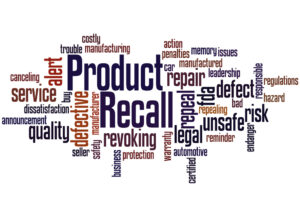
Regardless of where you live in the U.S., as a driver or passenger, you’ve no doubt noticed guardrails along the sides of roads and highways. Ideally, guardrails are designed to stop a vehicle without hitting anything or careening down an incline when it goes off the road—many areas throughout Virginia and across the country present dangers if this were to happen. Ravines and steep slopes, utility poles, trees and forests, retaining walls, and other objects or terrain along roadways could cause severe injuries or death if guardrails weren’t there to protect drivers.
However, what happens when a guardrail meant to keep drivers safe does the opposite? Numerous product liability lawsuits have been filed by people injured and the families of victims who were killed in guardrail accidents. They allege there are significant design flaws with specific types of guardrails.
The state of Missouri recently settled a $56 million guardrail lawsuit with Trinity Industries and its manufacturing company, Trinity Highway Products. The settlement will cover the costs of removing and replacing the company’s ET-Plus end terminal on the state’s roads and highways.
Guardrails by Trinity have been linked to several deaths, and many victims have suffered severe injuries after colliding with them, including amputation. At Curcio Law, we have extensive experience with product liability cases and can help those injured by dangerous guardrails get the compensation they deserve.
Defective Guardrails Can Cause Severe Injuries, Deaths
According to the Federal Highway Administration, the purpose of guardrails is to “make roads safer and lessen the severity of crashes.” They’re installed with the goal of preventing drivers from encountering known risks on the sides of roads. When struck, guardrails are designed to absorb the shock, or energy, from the impact, and bring vehicles to a controlled stop or direct them back onto the road. How this is done depends on the design and where it’s hit.
The Trinity ET-Plus guardrail end terminal is designed to spool when struck. Other designs absorb the energy of the striking vehicle in other ways, such as by telescoping. However, these various designs have failed in many guardrail accidents, and drivers, passengers, and their families have suffered greatly because they’re not performing as designed and marketed.
When they failed, guardrails have penetrated through vehicles, sometimes impaling the people inside, or causing a serious accident because the energy from the crash wasn’t absorbed. Defective guardrails have caused severe and fatal injuries, including deep, piercing wounds, lost limbs, organ damage, traumatic brain injuries (TBIs), broken bones, spinal cord injuries, and more. In many cases, vehicle collisions with defective guardrails have resulted in injuries worse than if they didn’t exist.
If there’s a design flaw or manufacturing defect, or it wasn’t installed properly, an accident with a guardrail can be extremely dangerous for those inside the vehicle. Several lawsuits have already demonstrated that the Trinity ET-Plus and other types of guardrails pose risks of injury and death. And these accidents can cause lifelong health struggles like chronic pain and permanent disabilities, affect the victim’s ability to work or care for their family, cause financial difficulties, require future surgeries, and decrease enjoyment of life.
Simply put, a personal injury from an accident involving a defective guardrail can have significant short- and long-term effects on the victim and their family. Manufacturers of a defective guardrail can be held accountable through product liability lawsuits that can help those injured be compensated for a range of damages.
Guardrail Manufacturers Must Be Held Accountable
Individual states are suing defective guardrail manufacturers, and more of these lawsuits are likely to come. They’re trying to recoup the money paid to remove and replace the defectively designed guardrails and end terminals, which Missouri successfully did through a settlement with Trinity earlier this year.
Virginia has also taken action against Trinity, alleging fraud in a lawsuit filed in 2021. They claimed the manufacturer redesigned the guardrails without their knowledge, and that the change to the end terminal’s size made them dangerous, and therefore didn’t perform as marketed and originally designed.
There are so many clear dangers of defective highway guardrails, and too many drivers and passengers have unfairly endured the consequences of these dangerous products that are meant to keep people safe. The companies that designed and manufactured defective guardrails have put people at serious risk of harm, and they must be held accountable.
If you or someone you know was injured or killed in a guardrail accident in Virginia, contact the Curcio Law Firm. Our experience in product liability lawsuits has helped our clients get the compensation they need and deserve. For more information, call or text us at 703-836-3366, email info@curciolaw.com, or visit www.curciolaw.com.

Tom Curcio has devoted his career to representing people seriously injured or killed in car, pedestrian, bicycle, and truck crashes, and by dangerous dogs, unsafe products, and premises. He works tirelessly to obtain the compensation his clients are legally entitled to so they may rebuild their lives with dignity. Tom is the co-author of the book Evidence For The Trial Lawyer, and a much sought-after speaker on personal injury, trial practice, evidence, and professionalism. Contact Tom at tcurcio@curciolaw.com.














Comments for this article are closed.